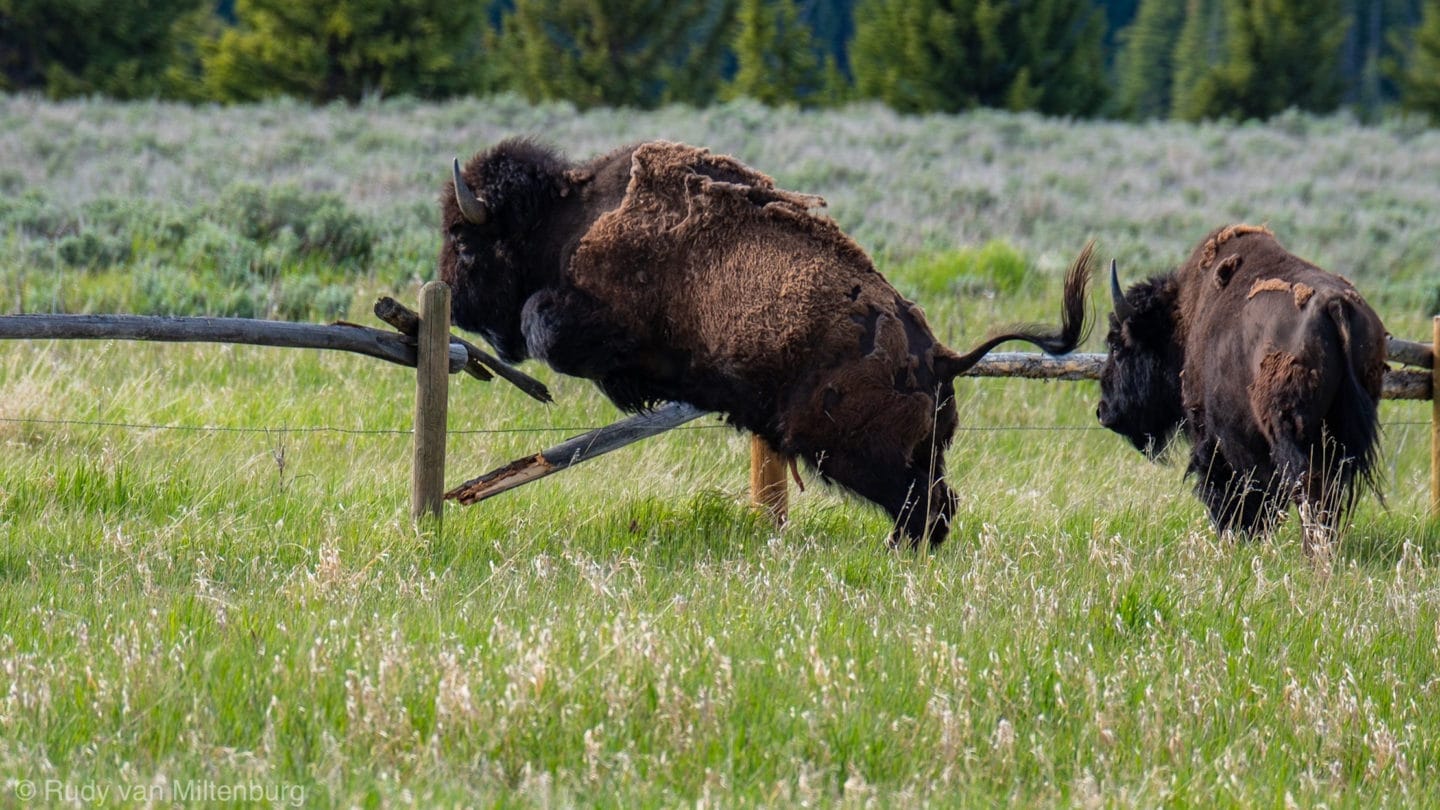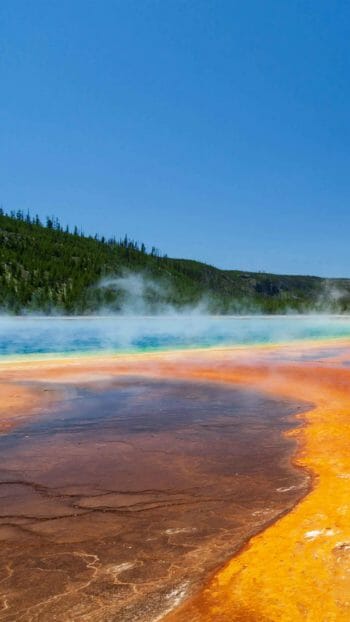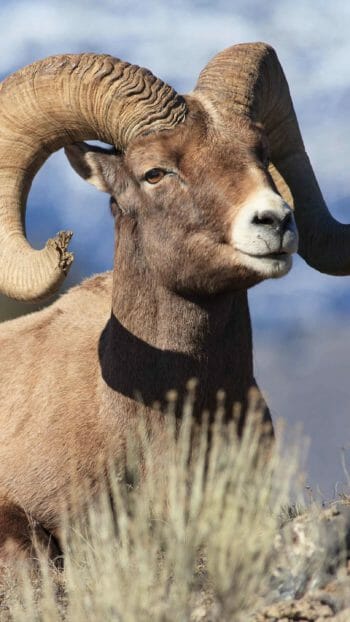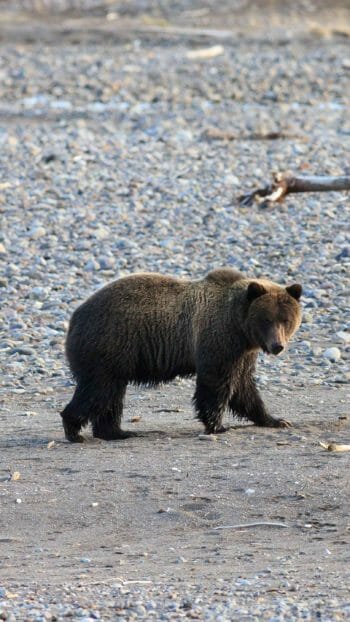Planning a trip to Yellowstone National Park soon, but wondering when the best time to visit is? While every season in the park is special, the scenery, wildlife, and activities change depending on the time of year.
The tour guides at Yellowstone Safari Company can tell you when the best time to visit is depending on what you want to see and do. Here’s everything you can expect from Yellowstone National Park during the four seasons.
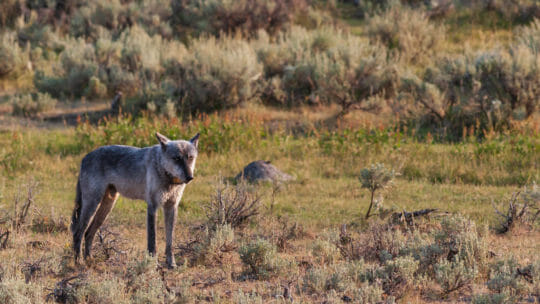
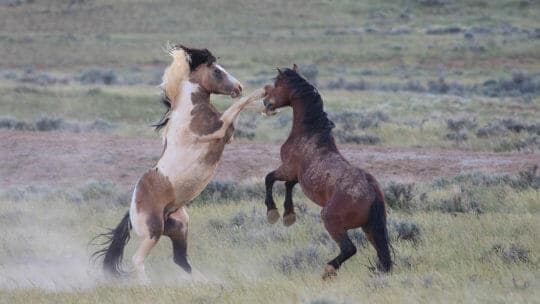
Spring
Yellowstone is the perfect place to experience the perks of spring. The flora and fauna begin to bloom and baby animals make their appearance throughout the park.
If you want to see the majority of the park’s famous animals out and about with their young, spring is the best time to visit Yellowstone. A full-day safari is ideal for observation. Our guides begin the tour early in the morning hours so you can watch the herds of bison and elk grazing in the meadows and valleys when they are the most active with their young. You can also keep an eye out for apex predators like wolves and grizzlies that begin to emerge in the spring.
Spring typically begins in Yellowstone National Park around May, and this is after nearly 8 months of extreme winter where multiple feet of snow accumulates and temperatures will drop well below freezing. Visiting this early in the season will allow you to witness surviving snow drifts, lakes that might still be frozen and a few snow showers might even occur. Weather-wise, this might not sound very inviting, but in terms of finding wildlife, this time of year is spectacular!
If you like seeing baby animals, spring might be the season for you! Bison are the first animals to begin calving in May. Nearly every 1,000lbs mature female bison will eventually have a little 40lbs reddish brown calf following her. Due to their color, these babies are called “red dogs”. They live up to their name as well in how playful they can be with each other, romping and running around like super-sized puppies. Elk and moose will begin calving by June, when more snow has melted and temperatures continue to rise.
Many visitors to Yellowstone are eagerly seeking out bears, and spring is a wonderful time to do so! Grizzly bears usually go into hibernation some time in December, and black bears will usually be denned up by November. Depending on weather, these bears could start coming out of hibernation as early as April, or later in May. Since there is still a lot of snow on the ground in early spring, both grizzly and black bears will be having a tough time finding food. They’ll typically be sniffing out the carcasses of animals that perished during the winter and were buried and preserved by the snow, or digging up middens of whitebark pine nuts that red squirrels buried in the ground throughout the past summer and fall. As more snow melts and vegetation begins to thrive once more, the bears will begin to graze heavily on sprouting grasses and varieties of native flowers that have nutritious roots, so keep an eye out for them in open meadows and grasslands.
As summer gets closer, more and more wildflowers will be blooming. Throughout both the open valley floors and the shadier forested groves, flowers such as arrowleaf balsamroot, sticky geranium, violets and biscuitroot will pop open and add wondrous splashes of color to the landscape. It is amazing how a place that experiences such a long winter can become so vibrant with plant life!
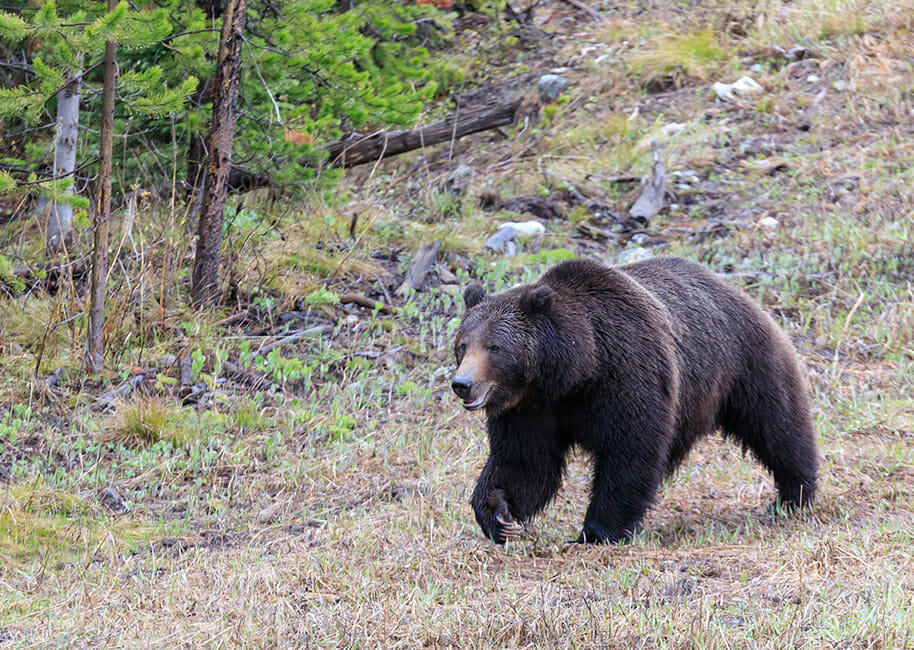
Summer
The hot summer months bring new wildlife behaviors to observe. The National Park Service explained that June to September is bison mating season (known as the rut). If you visit the park during these months, you will likely see bulls courting females, wallowing in the dust, bellowing, and challenging any perceived threats.
Midsummer is also when bears are most commonly seen in the meadows around the park. If you want to see bears while they’re the most active, it’s best to try to see them at dawn or dusk. However, they can be seen roaming in the open spaces near forested areas any time of day.
Summer in Yellowstone usually begins around mid to late June. Temperatures begin rising in the day, and by July could reach highs of 90 degrees Fahrenheit! Quite a dramatic contrast to the potential -30 degrees Fahrenheit that could be experienced in January. If you like warm weather, with less of a risk of snow (which can still happen any time of the year) Summer might be the perfect time to visit. However, while you might like the heat, many wildlife do not. Timing becomes vital when seeking wildlife in Summer, for instance Deer, Elk and Moose are most active at dawn and dusk when temperatures are cooler.
The bison will still be roaming the open valleys, but might stay closer to rivers, lakes or ponds in case they want to go for a swim or find a nice muddy spot to wallow in to cool off. Starting around mid July however, these massive mammals become a little more exciting to watch. This is when the bison breeding season begins! The one ton bulls will be courting females, following them around while uttering loud, guttural bellows. The males will also put on shows of their strength by rolling their huge bodies in dusty wallows, or challenging each other to potentially deadly battles. Keep in mind though it is even more vital to keep a safe distance from the bison during this time, the bulls will be more aggressive and more likely to gore someone who gets too close. They have even been known to ram vehicles during the rut!
Bears can be a little trickier to find as summer reaches its peak. Grizzlies will often head for high elevations, where temperatures are lower and plant life hasn’t yet been fried to crisp by the heat and drought of July and August. Also during this time is when the army cutworm moth will be active on the mountainsides where there are plenty of flowers still in bloom. This moth will feed on nectar in the night, and hide under rocks in the day. Grizzly bears have learned that by trekking through talus slopes and flipping over the stones, they can quickly lap up the moths that were in hiding. This might not sound like a significant food source, but it is estimated that the grizzlies could eat as many as 40,000 moths in a day, which equates to about 20,000 calories of fat! Black bears do not typically make the trek into high elevations to feed on these moths, instead they will find cooler shelter in forested areas. By July a variety of native fruits begin to ripen that black bears love to eat, some examples would be: huckleberry, whortleberry and wild strawberry. These wild berries all thrive in older growth pine forests (which are plentiful in Yellowstone), where the trees are tall and the understory is relatively clear of other competing vegetation.
While wildlife might be more difficult to find in the heat of summer, one aspect of Yellowstone might look its best- the geothermal features! This includes the hot spring, geysers, mud pots and fumaroles that make this first national park so very unique. Most visitors to Yellowstone want to see the iconic Old Faithful Geyser and the Grand Prismatic Hot Spring, and unfortunately if you do so in the cooler parts of the year the amount of steam these features produce can impede viewing! The summer heat means the steam will evaporate more quickly and make seeing the 100+ foot water spout that erupts from Old Faithful, and vibrant shades of blue, yellow, red and orange of Grand Prismatic much easier.
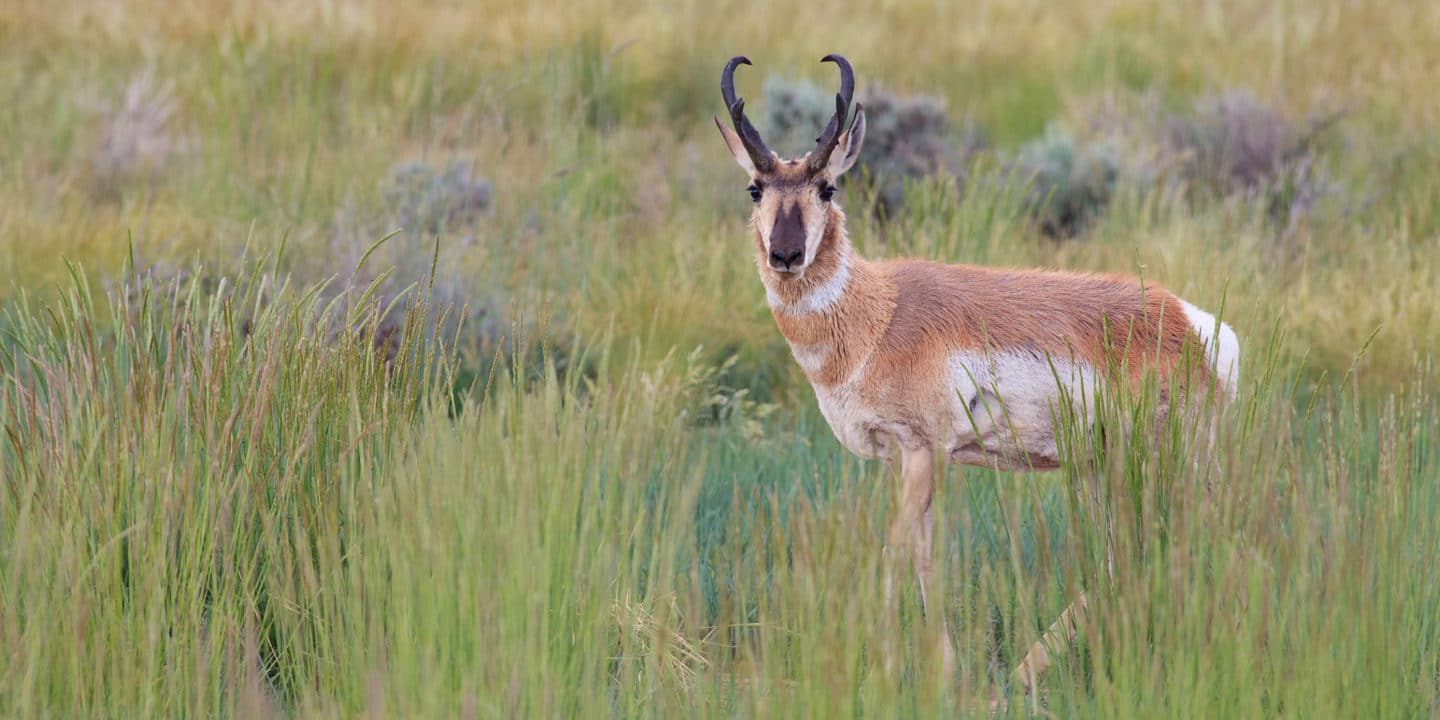
Fall
One of the highlights of visiting Yellowstone in the fall is the foliage. The colors of autumn are a sight to behold and best seen close up on a walking safari. As you take in the scenery, you will likely hear elk bugling, since September-October is elk rut season.
By September, fall descends upon Yellowstone by way of cooler temperatures, more rain or snow and the lovely change of color in the leaves of deciduous trees. If you are seeking autumn color, look for aspen stands that usually thrive at the edges of pine forests throughout the valleys in the park. With their smooth white bark, this tree species is striking when its leaves blush with gold, orange or red. The last week of September and first week of October is usually prime time to witness the landscape catch fire! Metaphorically speaking of course.
Bears become quite lively during this season, with hibernation being just two-three months away they enter a stage of hyperphagia. This is when their body will keep sending signals that it is starving, driving them to gorge themselves in order to pack on fat for winter. Fortunately by this time the fruits of serviceberry, hawthorne and chokecherry will be ripe, and both black and grizzly bear will be busy stripping the fruits off these shrubs. These bears can potentially gain as much as 3lbs a day while in hyperphagia, so if you want to see this animal at its chubbiest consider visiting for the fall!
Fall is also an excellent time to observe deer, elk and moose because these three species all enter their breeding season starting in September! Deer and elk will gather in open grasslands at dawn and dusk, the males will be aggressively courting females and trying to form harems. The elk are especially hard to miss during this time because the bulls become quite noisy. As the sun rises and sets a crescendo of bugles will be piercing the air as the male elk try to attract females and ward off competitors. The best time to look for moose is also early morning or late evening, which is when the males pursuing females could be more out in the open and easier to spot. Throughout the rest of the day they might be lurking in willow thickets growing along waterways. Moose are a more solitary animal however, so it is not as likely to see a harem of females around one bull.
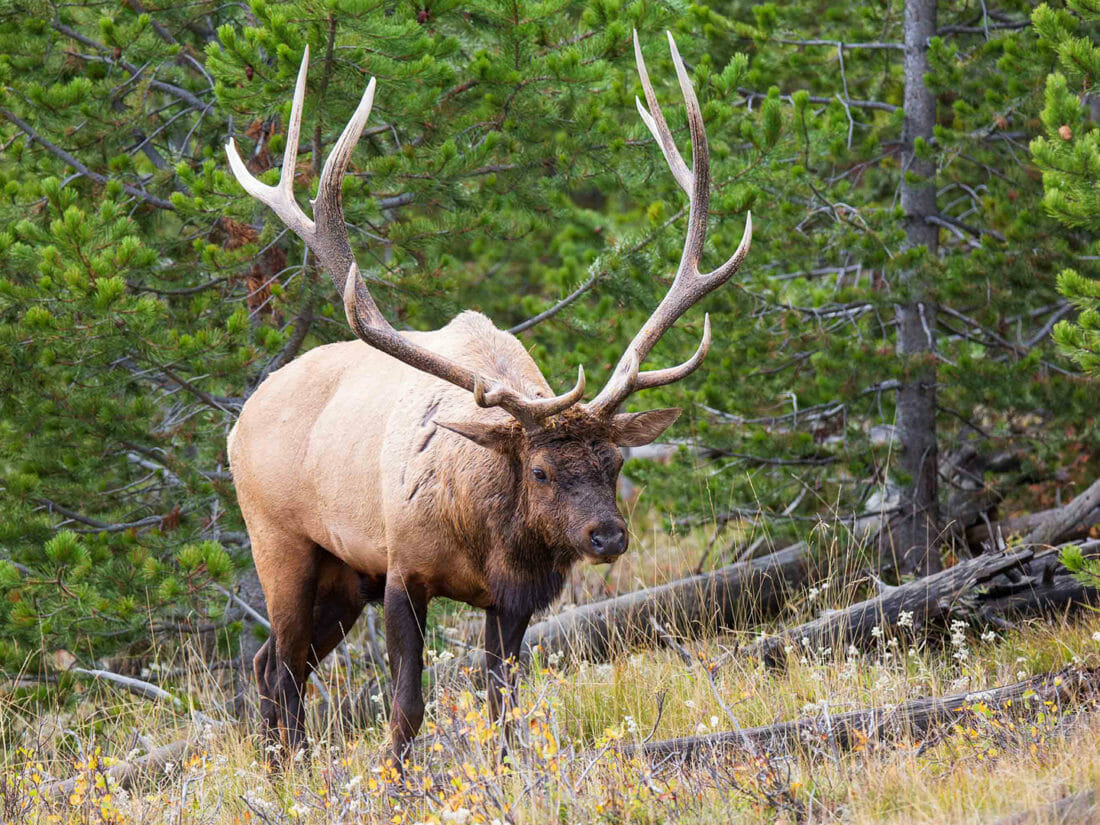
Each season in Yellowstone National Park offers something unique in the form of scenery and wildlife! Make sure to keep that in mind when you are visiting so you can maximize your experience in this 2.2 million acre park, and know that hiring an experienced guide greatly helps with that! Tour guides with the Yellowstone Safari Company will be able to navigate you to the best wildlife watching and landscape viewing spots in the park, depending on the time of year and what you are most interested in seeing. They will have important tools like binoculars and spotting scopes to help you view animals at great distances, along with valuable insight and information to share. There are full day and multi-day tours of Yellowstone National Park to choose from, including walking safaris in case you really want to immerse yourself in the wilds of the world’s first national park!
Explore Yellowstone National Park
Guided Tours
Planning a visit during the winter months? You’re in the right place. Bozeman is an excellent starting point for all winter tours to Yellowstone National Park.

